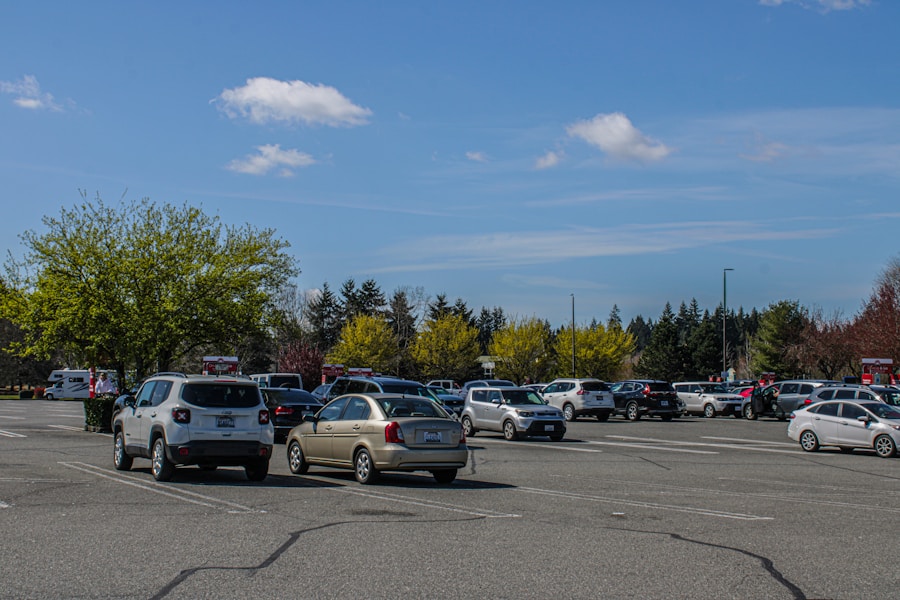Expanding a business is a significant decision that requires careful consideration and planning. Before embarking on the expansion process, it is essential to understand the need for expansion. This may be driven by various factors such as increased demand for products or services, the desire to reach new markets, or the need to accommodate a growing workforce. By understanding the need for expansion, businesses can make informed decisions and develop a clear vision for the future.
Furthermore, understanding the need for expansion involves conducting a thorough analysis of the current business operations and identifying areas that require improvement or expansion. This may involve assessing customer feedback, analyzing sales data, and evaluating the competition. By gaining a comprehensive understanding of the need for expansion, businesses can develop a strategic plan that aligns with their long-term goals and objectives. Additionally, understanding the need for expansion allows businesses to anticipate potential challenges and develop contingency plans to mitigate risks.
Assessing Available Space and Resources
Once the need for expansion has been identified, the next step is to assess the available space and resources. This involves evaluating the current facilities and determining whether they can accommodate the planned expansion. Businesses must consider factors such as square footage, layout, and infrastructure to ensure that the expansion can be seamlessly integrated into the existing space. Additionally, businesses must assess their resources, including financial capital, manpower, and equipment, to determine whether they have the capacity to support the expansion.
Assessing available space and resources also involves considering potential obstacles or limitations that may impact the expansion process. This may include zoning restrictions, environmental regulations, or logistical challenges. By conducting a thorough assessment of available space and resources, businesses can make informed decisions about the feasibility of the expansion and develop a realistic timeline for implementation. Furthermore, this assessment allows businesses to identify any gaps in resources and develop a plan to address them before moving forward with the expansion.
Budgeting and Planning for Expansion
Budgeting and planning for expansion are critical components of the expansion process. Developing a comprehensive budget involves estimating the costs associated with the expansion, including construction expenses, equipment purchases, and operational costs. Businesses must also consider potential unforeseen expenses and allocate funds accordingly to ensure that the expansion stays within budget. Additionally, businesses must develop a detailed timeline for the expansion, taking into account factors such as construction lead times, permit approvals, and staffing requirements.
Furthermore, planning for expansion involves developing a strategic plan that outlines the goals, objectives, and milestones of the expansion project. This may include creating a project management team, establishing communication protocols, and identifying key performance indicators to measure the success of the expansion. By developing a comprehensive budget and plan for expansion, businesses can effectively manage resources, minimize risks, and ensure that the expansion is executed in a timely and efficient manner.
Obtaining Necessary Permits and Approvals
Obtaining necessary permits and approvals is a crucial step in the expansion process. Businesses must navigate through various regulatory requirements and obtain permits from local authorities before commencing with the expansion project. This may include building permits, zoning approvals, environmental clearances, and health and safety certifications. Failure to obtain necessary permits and approvals can result in costly delays and legal repercussions, making it essential for businesses to proactively address these requirements.
Additionally, businesses must engage with relevant stakeholders such as community members, government agencies, and environmental organizations to gain support for the expansion project. This may involve conducting public hearings, addressing concerns from local residents, and collaborating with regulatory bodies to ensure compliance with all applicable laws and regulations. By obtaining necessary permits and approvals, businesses can demonstrate their commitment to responsible growth and build positive relationships with the community.
Hiring a Professional Contractor
Hiring a professional contractor is essential for ensuring that the expansion project is executed with precision and quality. Businesses must conduct thorough research to identify reputable contractors with experience in commercial construction and a proven track record of delivering successful projects. It is important to solicit bids from multiple contractors and evaluate their proposals based on factors such as cost, timeline, and past performance. Additionally, businesses should seek references from previous clients and visit completed projects to assess the contractor’s workmanship.
Furthermore, hiring a professional contractor involves negotiating a detailed contract that outlines the scope of work, payment terms, and project milestones. Businesses must also ensure that the contractor has adequate insurance coverage and complies with all safety regulations to protect against potential liabilities. By hiring a professional contractor, businesses can benefit from their expertise in construction management, access to skilled labor, and adherence to industry best practices, ultimately ensuring that the expansion project is completed to high standards.
Implementing Effective Traffic Flow and Signage
Implementing effective traffic flow and signage is crucial for managing the increased activity associated with an expansion project. Businesses must consider factors such as parking availability, pedestrian access, and vehicle circulation to ensure that customers, employees, and suppliers can navigate the expanded facilities safely and efficiently. This may involve reconfiguring parking lots, installing directional signage, and implementing traffic control measures to minimize congestion and enhance overall accessibility.
Additionally, businesses should consider incorporating wayfinding signage to guide visitors through the expanded facilities and highlight key amenities or points of interest. This may include interior signage such as directories, room identifiers, and informational displays to improve navigation within the premises. By implementing effective traffic flow and signage, businesses can enhance the overall customer experience, improve operational efficiency, and create a positive first impression for visitors.
Monitoring and Evaluating the Expansion’s Impact
Monitoring and evaluating the impact of the expansion is essential for assessing its success and identifying areas for improvement. Businesses should establish key performance indicators to measure factors such as increased sales revenue, customer satisfaction levels, employee productivity, and operational efficiency following the expansion. This may involve conducting surveys, analyzing sales data, and soliciting feedback from stakeholders to gain insights into the impact of the expansion on various aspects of the business.
Furthermore, businesses should regularly review their financial performance to assess whether the expansion has delivered a return on investment and contributed to overall profitability. This may involve comparing pre-expansion financial metrics with post-expansion results to identify any discrepancies or trends that require attention. By monitoring and evaluating the expansion’s impact, businesses can make informed decisions about future growth strategies and adapt their operations to capitalize on opportunities or address challenges that arise as a result of the expansion.
In conclusion, expanding a business requires careful planning and execution to ensure its success. By understanding the need for expansion, assessing available space and resources, budgeting and planning for expansion, obtaining necessary permits and approvals, hiring a professional contractor, implementing effective traffic flow and signage, and monitoring and evaluating the expansion’s impact, businesses can navigate through the complexities of expansion with confidence and achieve their growth objectives. With strategic foresight and proactive management, businesses can position themselves for sustainable growth and long-term success in an ever-evolving marketplace.

